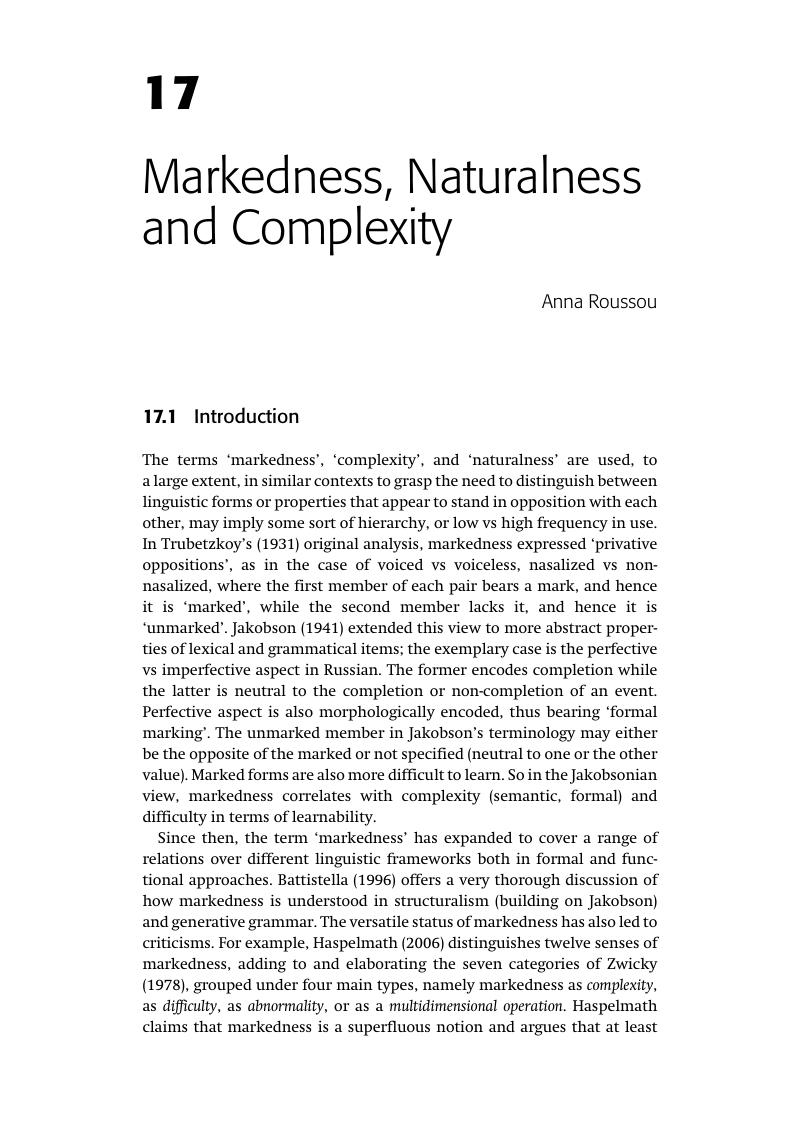Book contents
- The Cambridge Handbook of Historical Syntax
- Cambridge Handbooks in Language and Linguistics
- The Cambridge Handbook of Historical Syntax
- Copyright page
- Contents
- Figures
- Tables
- Contributors
- Abbreviations
- Introduction
- Part I Types and Mechanisms of Syntactic Change
- Part II Methods and Tools
- Part III Principles and Constraints
- 13 Universal Grammar
- 14 Abduction
- 15 Transparency
- 16 Uniformitarianism
- 17 Markedness, Naturalness and Complexity
- 18 Acquisition and Learnability
- Part IV Major Issues and Themes
- Part V Explanations
- Part VI Models and Approaches
- Index
- References
17 - Markedness, Naturalness and Complexity
from Part III - Principles and Constraints
Published online by Cambridge University Press: 28 April 2017
- The Cambridge Handbook of Historical Syntax
- Cambridge Handbooks in Language and Linguistics
- The Cambridge Handbook of Historical Syntax
- Copyright page
- Contents
- Figures
- Tables
- Contributors
- Abbreviations
- Introduction
- Part I Types and Mechanisms of Syntactic Change
- Part II Methods and Tools
- Part III Principles and Constraints
- 13 Universal Grammar
- 14 Abduction
- 15 Transparency
- 16 Uniformitarianism
- 17 Markedness, Naturalness and Complexity
- 18 Acquisition and Learnability
- Part IV Major Issues and Themes
- Part V Explanations
- Part VI Models and Approaches
- Index
- References
Summary

- Type
- Chapter
- Information
- The Cambridge Handbook of Historical Syntax , pp. 360 - 380Publisher: Cambridge University PressPrint publication year: 2017
References
- 2
- Cited by



